
Small homes, going off-the-grid and the popularity of figures like lumberjacks show that Western culture is reaching back to its roots to reinvent itself, especially in terms of the way we live and the spaces we inhabit. The current popularity of the “log cabin” and its associated “rustic” appeal is evidence of that nostalgia. But log buildings don’t need to be a little log cabin in the woods. As these 10 examples show, log buildings have been around for a long time, they came in all shapes and sizes—and they continue to diversify.
Advertisement
10. Hans Liberg Recording Studio, Netherlands
Hans Liberg is a Dutch composer and like many artists, he finds the modern world distracts him from his art. In his case, the sounds of sirens and phones ringing play havoc with his ability to create. Enter a log cabin in the woods: an escape, a true retreat from the noisiness of modernity to the solitude of nature. But Liberg’s log cabin isn’t like any other. No, this construction is designed to look like a woodpile, the kind you’d find stocked for keeping the fire stoked during the long, cold winter. Not only that, but this log cabin is mobile; Liberg decided to set his studio up so he could move it around if, say, one place gets too noisy. Inside is a sound recording studio, where Liberg can create his art—albeit while making noise to disturb everyone else when the windows are open!
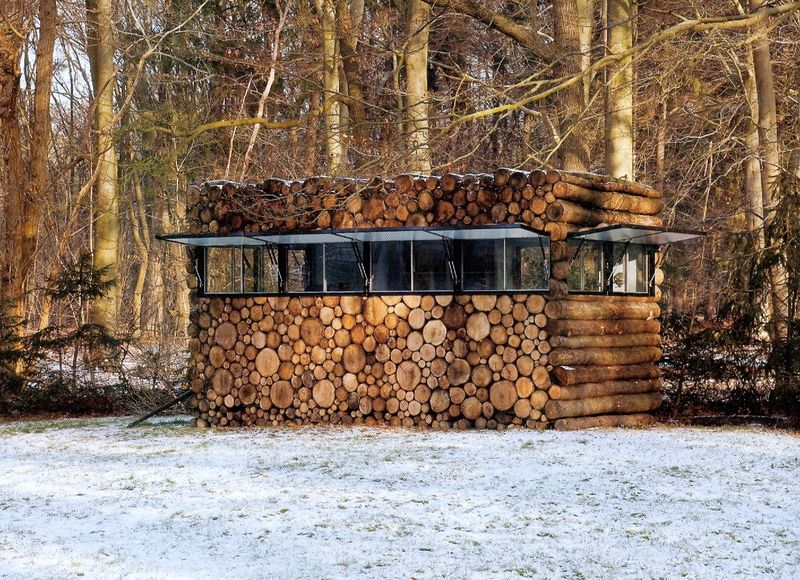
9. Victory Lodge – Sierra Nevada, United States
The American motto has long seemed to be “go big or go home,” and that’s certainly the motif behind Victory Lodge near June Lake, in the Sierra Nevada region of California. This enormous log cabin thoroughly stretches the definition of “cabin” with its magnitude. Nominally a single-family dwelling, the cabin features nine bedrooms and nine baths. The building, while privately owned, is rented out, occasionally as a wedding venue. It comes with all the amenities of modern life: 11 fireplaces, a six car garage, a sauna and even its own private casino. Coupled with sweeping views of the mountainous landscape surrounding it, Victory Lodge is truly an amazing example of what you can do with a few logs and a bit of cash—the property is valued at over $14 million and a weekly rental will run you nearly $5,000.
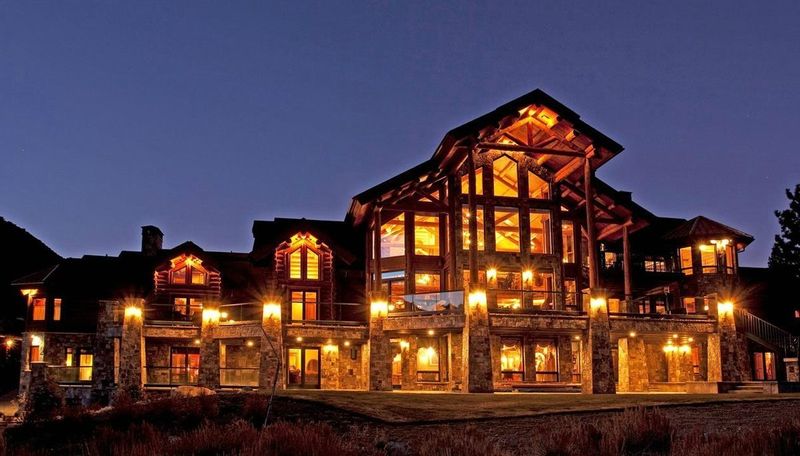
8. Biskupin – Lake Biskupin, Poland
Biskupin is an Iron Age settlement and fortress in Poland. When the site was discovered in the 1930s, it became famous and was used by Polish nationalists to show that prehistoric “Poles” had held their own against the Germans; the site was only 70 kilometers from the German border. A life-size model was constructed in the 1930s, but was destroyed by the retreating German army at the end of World War II. They also flooded the site, hoping to destroy it, but the water actually helped preserve the ancient timber—which was then used to date the site and to reconstruct a new, open-air museum. The Iron Age settlement was dated between 747 and 722 B.C., with over half of the wood being dated to 738–37 B.C. by dendrochronology. The ramparts and several houses have been reconstructed for visitors.

7. Chateau Montebello – Quebec, Canada
If you think log buildings are limited to log cabins, the Chateau Montebello in Quebec, Canada, invites you to think again. This hotel sits on a 65,000-acre, forested wildlife sanctuary on the shores of the Ottawa River. It has been a popular destination for Canadian leaders hosting international summits; many world leaders have visited the chateau for conferences and meetings. The plot, which had originally been granted to a bishop of New France in 1674 and subsequently sold and resold, ended up in the hands of Harold M. Saddleman in the late 1920s. Under the direction of a Finnish master builder, the Scandinavian-style log buildings were constructed in the early 1930s using red cedar shipped in via the Canadian Pacific Railway. The chateau remains a popular private retreat, in part because of its blend of luxury and rustic appeal.
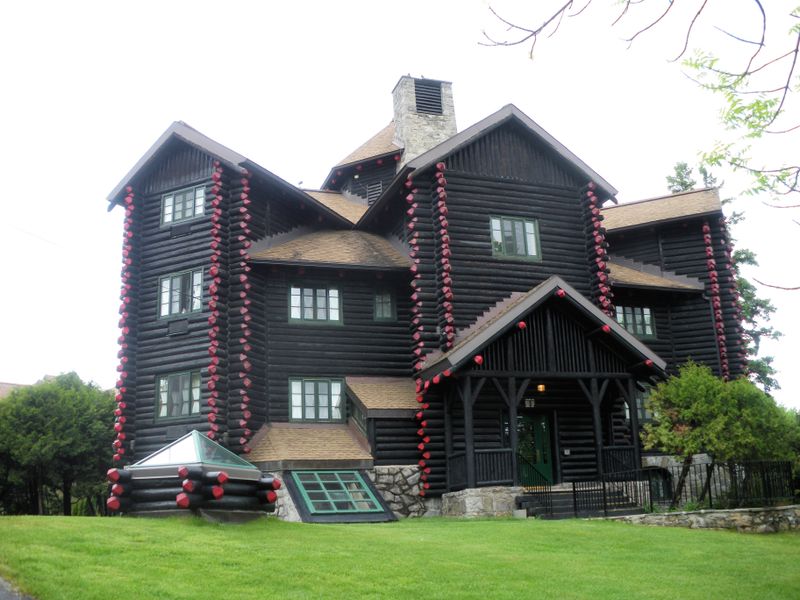
Advertisement
6. Gakona Roadhouse – Gakona, Alaska
In 1904, the U.S. Army was in the midst of building the Trans-Alaska Military Highway between Valdez and Eagle. During construction, they put up a number of buildings to house workers, including what is now the Gakona Roadhouse. It sits at mile 205 of the Glenn Highway, which is located at a point where the new military highway diverged from the old trail that had been frequented by miners on their way to the Yukon River fields during the gold rush of the late 1890s. Today, travelers are welcomed into structures dating to the 1920s, while the 1904 building is used for storage. It has a 1-1/2 log structure and a gabled roof made of corrugated metal. The building was listed on the American National Register of Historic Places in 1977.
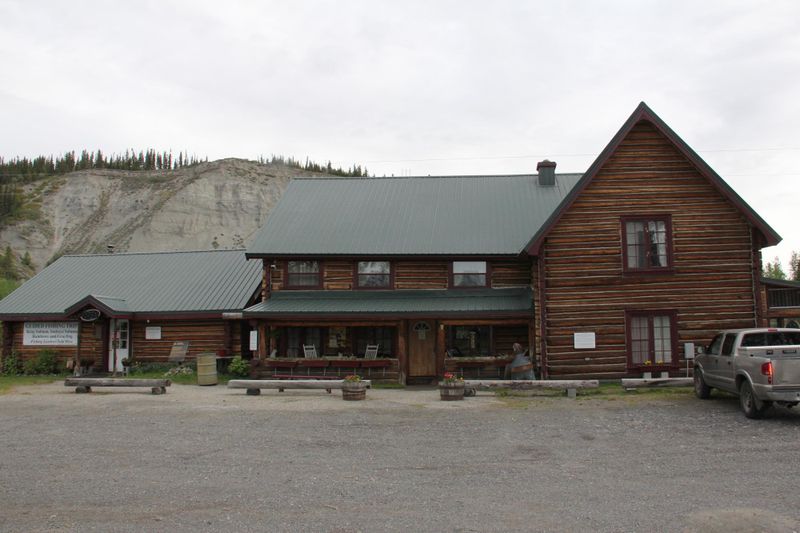
5. Shoso-in – Nara, Japan
Say “log building” and many people would think of a rustic construction made by pioneers somewhere in frontier America. Log cabins have been built around the world though, just in different styles. Take, for example, the Japanese azekura: joined-log structures typically made of cypress. The style was used for buildings like granaries and storehouses during the first millennium A.D. Perhaps the most famous azekura is Shoso-in, the treasure house at Todai-ji in Nara. It was built after 756 to house 600 items Empress Komyo had donated to the Great Buddha at Todai-ji in remembrance of her husband, Emperor Shomu. It is the oldest azekura building in Japan and the treasury holds some 9,000 items. The collection items are shown once a year at the Nara National Museum. Shoso-in is also home to a silk collection donated by the current Empress of Japan.
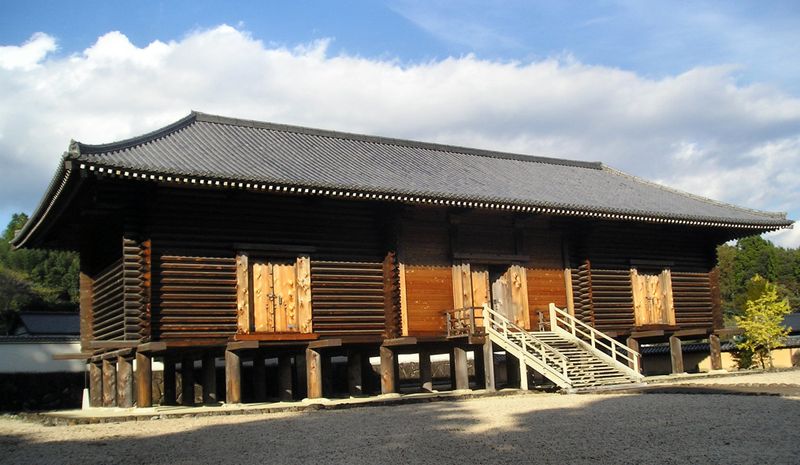
4. Church of Transfiguration – Karelia, Russia
If you want to see several cool log buildings in a short amount of time, visit Kizhi Pogost in Russia’s Perm Krai. Kizhi Pogost is an open-air museum that was founded in 1969; it has been welcoming visitors since 1980. The museum is dedicated to wooden architecture of the Ural region and includes 23 unique monuments, all of them constructed between the 1600s and the early 20th century. All of the structures are native to Perm Krai, although they were moved to the museum. A traditional Russian izba is on display, as well as a windmill. Perhaps most impressive is the Church of the Transfiguration, originally built in 1707 in the Cherdynsk District, complete with all its spires. The museum is one of the most important attractions in Perm Krai and regularly hosts festivals and holidays.
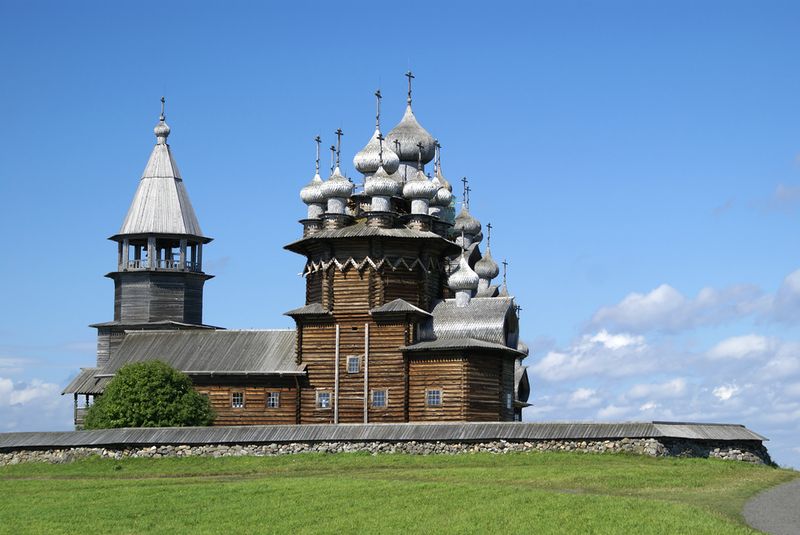
3. Vlkolínec Village – Vlkolínec, Slovakia
Not just one or two log buildings, Vlkolínec in central Slovakia is an intact village with some of the best examples of folk architecture in the Northern Carpathians. The village is one of 10 Slovak villages to have been granted status as a folk architecture reservation and has been listed as a UNESCO World Heritage site since 1993. The village, a remarkable example of the traditions of central Europe, consists of more than 45 traditional log houses. Houses Number 16 and 17 function as a folk museum dedicated to showcasing lifeways, complete with tools and other artifacts. A wooden belfry and a baroque-style chapel are also intact, dating from at least the 18th century. Vlkolínec has been described as “picturesque” and offers us a peek into how the mountain-dwelling peoples of central Europe lived centuries ago—and a chance to see how their traditions have influenced Slovak culture today.
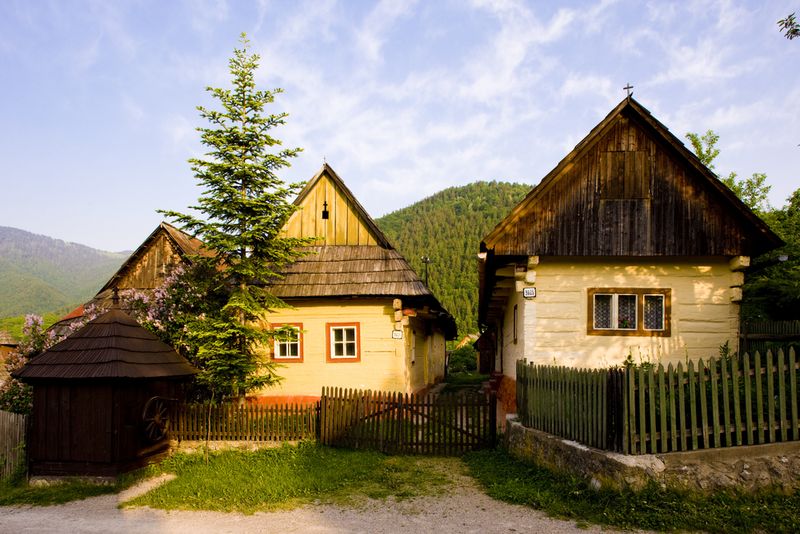
2. The Hess Homestead – Lancaster County, Pennsylvania
The Hess family immigrated from Germany in the early 18th century to Pennsylvania where they purchased a farm from the family of William Penn. The homestead functioned as a meeting place for Pennsylvania’s early Mennonites, until 1856 when the Mennonite church was built in Lancaster County. The early buildings on the land, including the 1740s log farm house, are fine examples of the German tradition of blockbau building, which the Hess family brought with them. In 1785, a log cabin was also built on the property. In 1985, a Hess descendant purchased the historic family property, and began relocation and conservation of several historic buildings that had been threatened with demolition. The former Reading Railroad line now forms a walking trail that adjoins the farmhouses. In 1999, the Warwick Township installed historic markers in the log farmhouse.
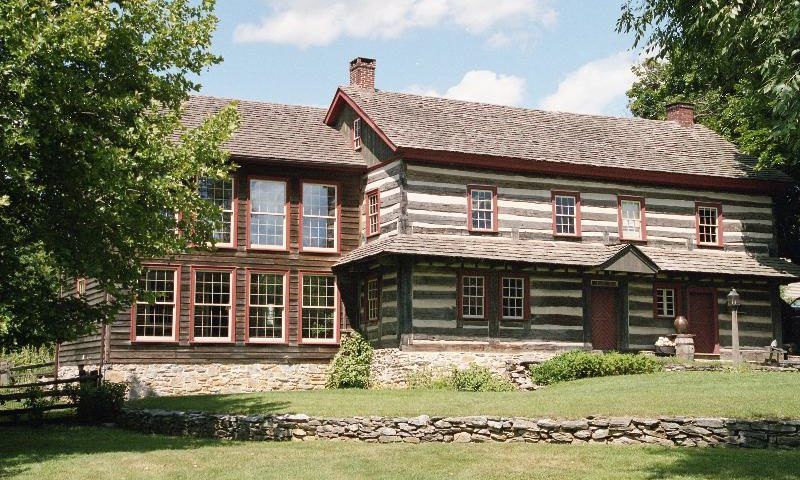
Advertisement
1. Heidal Church – Heidal, Norway
Heidal, Norway, is a valley and parish in the county of Oppland. Relatively unassuming and very rustic, the valley has a long history of carpentry and wood carving, and many historic buildings. Some, like the Bjostad farm are not open to the public, but are private property. Others, such as the Sore Harildstad farm allow guided tours. One of the places that visitors can tour are the Heidal Church, which was built between 1937 and 1941, as an exact replica of an 18th century log church that had burned down in 1933. Near to the church stands the Bjostad Chapel, another log building. It predates the church, being constructed in approximately 1531. Other log buildings are also scattered about the town, which makes visiting Heidal almost like stepping back in time. The church and chapel are excellent examples of local traditions merging with trends imported from elsewhere in Europe.
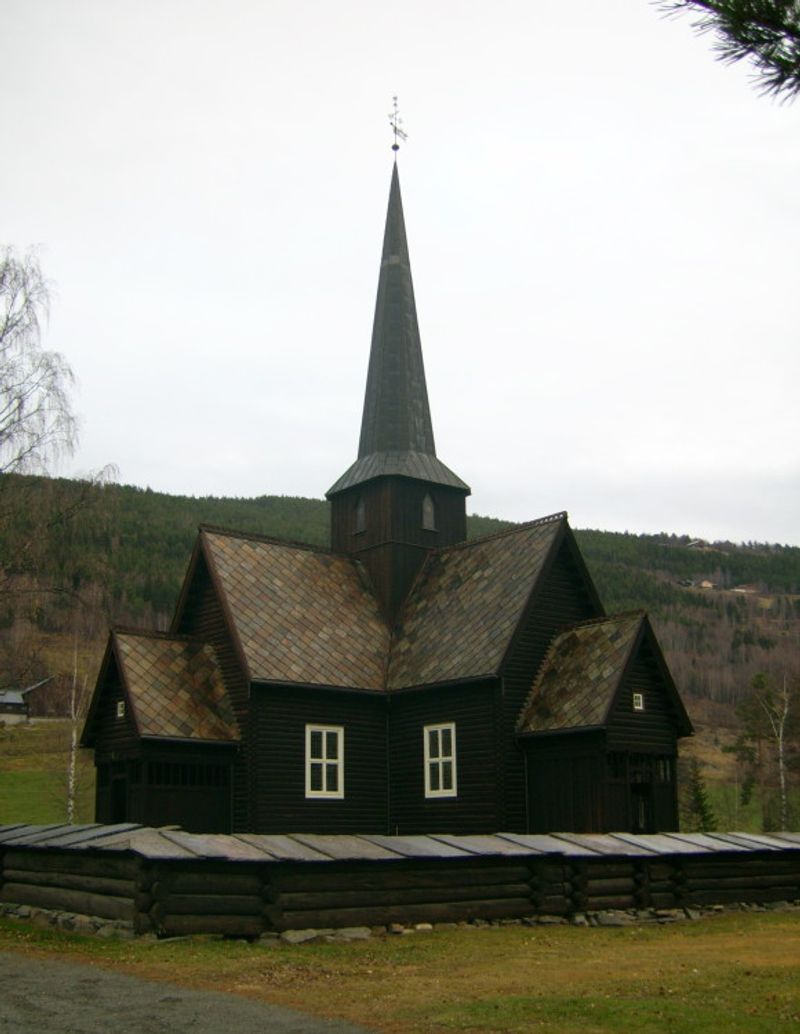
Advertisement